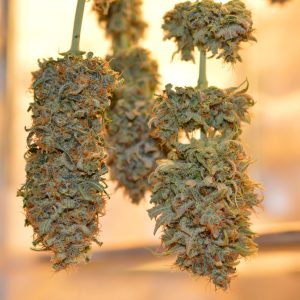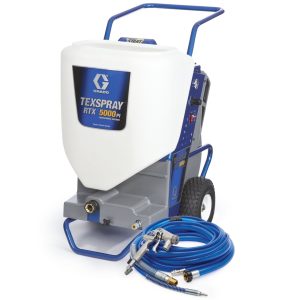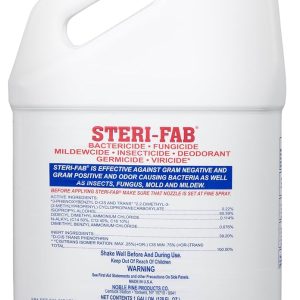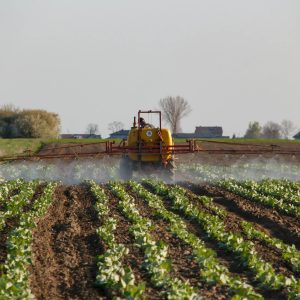
What Is Flower Spray and Why Your Plants Need It?
Flower spray represents one of the most effective methods for maintaining healthy, vibrant blooms in your garden. This specialized plant care solution delivers targeted nutrition and protection directly to flower petals, stems, and foliage through fine mist application. Unlike traditional watering methods, flower spray ensures even distribution of nutrients and protective compounds across all plant surfaces.
The science behind flower spray effectiveness lies in its ability to provide foliar feeding – a process where plants absorb nutrients directly through their leaves and flowers. Research conducted by agricultural scientists shows that foliar absorption can be 10-20 times more efficient than root absorption for certain nutrients. This makes flower spray an invaluable tool for gardeners seeking rapid results and healthier flowering plants.
Professional horticulturists recommend flower spray applications during specific times of day to maximize effectiveness. Early morning applications, typically between 6:00 AM and 9:00 AM, provide optimal conditions when plant stomata are most receptive to nutrient absorption. The combination of proper timing and quality flower spray formulations can dramatically improve bloom quality, color intensity, and overall plant resilience.
Types of Flower Spray Products Available
Organic Flower Spray Options
Organic flower spray formulations have gained tremendous popularity among environmentally conscious gardeners. These products utilize natural ingredients such as seaweed extracts, compost tea, and essential oils to nourish flowering plants without synthetic chemicals. Kelp-based flower spray products contain over 60 trace minerals essential for robust flower development, including potassium, magnesium, and calcium.
The benefits of organic flower spray extend beyond plant health to environmental protection. Studies indicate that organic formulations reduce soil contamination by up to 85% compared to synthetic alternatives. Popular organic ingredients include neem oil for pest control, fish emulsion for nitrogen supplementation, and molasses for beneficial microbial activity enhancement.
Commercial organic flower spray brands like Neptune’s Harvest and Fox Farm have established strong reputations for producing consistent, effective formulations. These products typically cost 15-25% more than synthetic options but provide long-term soil health benefits that justify the investment for serious gardeners.
Synthetic Flower Spray Formulations
Synthetic flower spray products offer precise nutrient control and rapid results for time-sensitive applications. These formulations contain carefully balanced ratios of nitrogen, phosphorus, and potassium specifically designed for flowering plant requirements. Quick-release synthetic flower spray can show visible improvements in bloom quality within 48-72 hours of application.
The primary advantage of synthetic flower spray lies in its consistency and shelf stability. Unlike organic alternatives that may vary in nutrient content based on source materials, synthetic formulations maintain exact specifications batch after batch. This reliability makes synthetic flower spray ideal for commercial growing operations and competitive flower exhibitions where consistent results are paramount.
However, synthetic flower spray requires careful application to avoid nutrient burn and environmental impact. Professional guidelines recommend diluting concentrated synthetic formulas to 50-75% of manufacturer specifications for sensitive flowering plants like orchids and begonias.
Essential Flower Spray Application Techniques
Proper Dilution and Mixing
Achieving optimal results with flower spray requires precise dilution ratios tailored to specific plant types and growth stages. Most concentrated flower spray products require mixing ratios between 1:10 to 1:50 depending on formulation strength and target plants. Creating accurate dilutions ensures maximum nutrient availability while preventing potential damage from over-concentration.
The water quality used for flower spray mixing significantly impacts effectiveness. Distilled or filtered water provides the cleanest foundation for nutrient solutions, eliminating chlorine and heavy metals that can interfere with plant absorption. Municipal water containing high chlorine levels should be allowed to sit uncovered for 24 hours before mixing with flower spray concentrates to allow chlorine evaporation.
Temperature considerations play a crucial role in flower spray preparation. Mixing water should maintain temperatures between 65-75°F to ensure proper dissolution of active ingredients. Cold water may not fully activate organic compounds, while hot water can denature beneficial enzymes present in biological flower spray formulations.
Application Equipment and Methods
Selecting appropriate equipment for flower spray application directly influences treatment effectiveness and efficiency. Glass bottle with spray top containers provide excellent chemical resistance and allow precise application control for small-scale gardening projects. These bottles prevent chemical reactions that can occur with plastic containers and maintain spray pattern consistency over extended use periods.
Professional-grade flower spray equipment includes pressure sprayers, backpack applicators, and automated misting systems. Pressure sprayers generating 30-50 PSI create optimal droplet sizes for flower spray absorption while minimizing waste through drift. The ideal droplet size for flower spray applications ranges between 100-300 microns, ensuring adequate coverage without runoff.
Spray pattern optimization requires understanding plant structure and growth habits. Upward-angled applications ensure flower spray reaches undersides of leaves where many beneficial absorption sites are located. Complete coverage typically requires 2-3 spray passes from different angles to reach all plant surfaces effectively.
Top Flower Spray Products for Different Plant Types
Rose Flower Spray Recommendations
Roses require specialized flower spray formulations that address their unique nutritional needs and common pest challenges. Bayer Advanced Rose & Flower Care combines systemic insecticide with balanced nutrition, providing 8-week protection against common rose pests while promoting vigorous flowering. This dual-action flower spray reduces application frequency and maintains consistent plant health.
Organic rose flower spray options include Espoma Rose-tone liquid fertilizer, which contains beneficial bacteria that improve soil health and nutrient availability. This biological flower spray approach supports long-term rose garden sustainability while producing exceptional bloom quality. Application rates typically range from 1 tablespoon per gallon for established bushes to 2 tablespoons per gallon for newly planted roses.
Timing rose flower spray applications coincides with bud development stages for maximum impact. Pre-bloom applications (when buds show color but haven’t opened) provide essential nutrients during peak demand periods. Post-bloom applications help restore plant energy and prepare for subsequent flowering cycles.
| Rose Variety | Recommended Flower Spray | Application Frequency | Key Benefits |
|---|---|---|---|
| Hybrid Tea | High-phosphorus formula | Every 2 weeks | Larger blooms |
| Climbing | Balanced NPK spray | Monthly | Strong cane growth |
| Miniature | Diluted standard formula | Weekly | Prevents burn |
| Antique | Organic fish emulsion | Bi-weekly | Gentle nutrition |
Orchid Flower Spray Solutions
Orchids present unique challenges for flower spray applications due to their epiphytic nature and sensitive root systems. Specialized orchid flower spray products maintain low salt concentrations while providing essential trace elements required for exotic flower development. These formulations typically contain less than 200 PPM total dissolved solids to prevent root damage.
WeeklyFeed orchid fertilizer represents one of the most successful orchid flower spray products, utilizing urea-free nitrogen sources that won’t burn delicate root tissues. This formulation provides balanced nutrition at 25% strength compared to traditional houseplant fertilizers, making it ideal for weekly flower spray applications.
Orchid flower spray application technique differs significantly from conventional garden plants. Misting around the plant rather than direct application prevents water accumulation in crown areas that can lead to rot. Professional orchid growers recommend flower spray applications in well-ventilated areas with good air circulation to promote rapid drying.
Annual Flower Spray Programs
Annual flowering plants benefit from intensive flower spray programs that maximize bloom production during their single growing season. High-frequency applications every 7-10 days ensure continuous nutrient availability during rapid growth periods. This aggressive approach produces exceptional flower quantity and quality but requires careful monitoring to prevent over-fertilization.
Miracle-Gro Bloom Booster flower spray provides the high phosphorus content (15-30-15 NPK ratio) that annual flowers require for maximum bloom production. This formulation supports up to 50% more flowers compared to standard fertilizer programs when applied consistently throughout the growing season.
Seasonal adjustment of flower spray programs accommodates changing plant needs as temperatures and daylight hours fluctuate. Spring applications focus on establishing strong root systems and initial growth, while summer programs emphasize bloom production and heat stress resistance. Fall applications help extend flowering periods and prepare plants for temperature transitions.
Common Flower Spray Mistakes to Avoid
Over-Application Issues
One of the most frequent flower spray mistakes involves applying excessive quantities or concentrations that can damage rather than benefit flowering plants. Nutrient burn from over-concentrated flower spray manifests as brown leaf edges, stunted growth, and reduced flowering. This condition occurs when salt concentrations exceed plant tolerance levels, typically above 1,500 PPM for most flowering species.
Recovery from flower spray over-application requires immediate soil flushing with clean water to dilute accumulated salts. Professional remediation involves applying 2-3 times the normal watering volume to leach excess nutrients from the root zone. Plant recovery typically takes 2-4 weeks depending on damage severity and plant species resilience.
Prevention strategies include accurate measuring tools and gradual concentration increases when switching flower spray products. Starting with half-strength applications allows observation of plant response before progressing to full-strength treatments. This cautious approach prevents costly mistakes and maintains plant health throughout the growing season.
Timing and Weather Considerations
Weather conditions dramatically impact flower spray effectiveness and plant safety. High-temperature applications above 85°F increase evaporation rates and can concentrate flower spray solutions on plant surfaces, causing chemical burns. Optimal application windows occur during mild temperatures between 65-75°F with low wind conditions.
Rainfall timing affects flower spray retention and effectiveness. Applications immediately before rain result in nutrient loss through washoff, wasting product and reducing benefits. Weather forecasting integration into flower spray schedules ensures maximum retention and plant uptake. 48-hour rain-free periods after application provide optimal absorption time for most formulations.
Wind conditions above 10 MPH create drift problems that reduce application accuracy and potentially harm non-target plants. Professional applicators use wind speed meters to determine suitable application conditions. Calm morning hours typically provide the best atmospheric conditions for precise flower spray placement.
Seasonal Flower Spray Schedules
Spring Flower Spray Programs
Spring flower spray programs focus on supporting rapid plant emergence and establishing strong foundation growth for the upcoming flowering season. Early spring applications begin when soil temperatures reach 50°F consistently, signaling active root growth resumption. This timing ensures flower spray nutrients are available when plants begin active uptake.
Pre-bloom flower spray applications 2-3 weeks before expected flowering provide essential nutrients during bud formation. High-phosphorus formulations support flower development while balanced nitrogen prevents excessive foliage growth at the expense of blooms. Spring application rates typically start at 50% strength and increase gradually as plant activity intensifies.
Soil temperature monitoring guides spring flower spray timing more accurately than calendar dates, which vary significantly by geographic location and annual weather patterns. Professional growers use soil thermometers at 4-inch depths to track temperature trends and optimize application timing for maximum plant response.
Summer Flower Spray Maintenance
Summer flower spray programs require adjustments for heat stress management and continuous bloom support. Heat-stressed plants show reduced nutrient uptake capacity, necessitating more frequent applications at lower concentrations. Twice-weekly applications at 25-30% strength maintain consistent nutrition without overwhelming stressed plant systems.
Water management becomes critical during summer flower spray programs. High temperatures increase evaporation rates, concentrating nutrients and potentially causing burn damage. Early morning applications between 6:00-8:00 AM provide optimal absorption time before heat stress occurs.
Foliar feeding benefits increase during summer when root uptake may be limited by dry soil conditions. Flower spray provides direct nutrition to plant tissues, bypassing potentially stressed root systems. This delivery method can maintain plant health and flowering during challenging weather conditions.
Fall Flower Spray Transitions
Fall flower spray programs prepare plants for dormancy while extending flowering periods as long as possible. Gradually reduced nitrogen levels in fall applications encourage flower production rather than new vegetative growth that won’t survive winter temperatures. Increased potassium concentrations improve cold tolerance and disease resistance.
Extended-release formulations work particularly well for fall flower spray programs, providing sustained nutrition as plant activity slows. These products release nutrients gradually over 6-8 weeks, supporting continued flowering without requiring frequent applications as temperatures drop.
Frost protection considerations influence fall flower spray timing and formulation selection. Anti-transpirant additives in flower spray solutions help protect plant tissues from frost damage while maintaining moisture balance during temperature fluctuations.
DIY Flower Spray Recipes
Natural Ingredient Formulations
Creating effective homemade flower spray solutions requires understanding plant nutrition principles and safe ingredient combinations. Compost tea flower spray provides balanced nutrition using readily available materials. This natural approach involves steeping 1 cup finished compost in 1 gallon water for 24-48 hours, then straining the liquid for spray application.
Epsom salt flower spray addresses magnesium deficiencies common in flowering plants, particularly roses and tomatoes. Mix 1 tablespoon Epsom salt per gallon water to create an effective magnesium supplement. This simple flower spray recipe costs less than $0.50 per gallon compared to commercial magnesium supplements.
Seaweed extract flower spray provides trace minerals and plant hormones that promote healthy flowering. Commercial liquid seaweed extracts can be diluted 1:100 ratio for effective flower spray applications, or dried kelp meal can be steeped similar to compost tea preparation methods.
Organic Flower Spray Combinations
Combining multiple organic ingredients creates synergistic flower spray effects that outperform single-ingredient solutions. Fish emulsion and kelp extract combinations provide both major nutrients and trace minerals essential for robust flower development. Mix 2 tablespoons fish emulsion and 1 tablespoon liquid kelp per gallon water for a complete organic flower spray.
Molasses additions to organic flower spray recipes feed beneficial soil microorganisms that improve nutrient availability. Add 1 teaspoon blackstrap molasses per gallon of flower spray solution to enhance biological activity. This addition particularly benefits organic growing systems where soil biology plays a crucial role in plant nutrition.
Essential oil additives provide natural pest deterrent properties while maintaining organic flower spray integrity. Neem oil at 1-2 tablespoons per gallon offers systemic pest protection, while peppermint or rosemary oils at 5-10 drops per gallon provide aromatic pest deterrence without harmful chemical residues.
Measuring Flower Spray Effectiveness
Plant Response Indicators
Monitoring flower spray effectiveness requires systematic observation of specific plant response indicators that demonstrate improved health and flowering performance. Flower count increases of 20-30% within 4-6 weeks indicate successful flower spray programs. Document baseline flower counts before beginning treatments to establish accurate comparison metrics.
Color intensity improvements in flower petals signal enhanced plant nutrition and health. Flower spray applications containing appropriate trace minerals produce noticeably more vibrant colors, particularly in roses, petunias, and marigolds. Digital photography with consistent lighting conditions provides objective documentation of color improvements over time.
Stem strength and flower longevity increase measurably with effective flower spray programs. Properly nourished flowers maintain quality 2-3 days longer than untreated plants, whether in garden settings or as cut flowers. This extended longevity indicates improved cellular structure and nutrient density within flower tissues.
Long-term Garden Health
Sustained flower spray programs produce cumulative benefits that extend beyond individual growing seasons. Soil biology improvements occur gradually as organic flower spray applications support beneficial microbial populations. Professional soil tests reveal increased organic matter and improved nutrient cycling after 2-3 seasons of consistent organic flower spray use.
Disease resistance improvements develop as plants receive balanced nutrition through regular flower spray applications. Well-nourished plants maintain stronger immune responses and recover more quickly from environmental stresses. Reduced fungicide requirements of 30-40% are common after establishing effective flower spray programs.
Pollinator attraction increases correlate with flower spray effectiveness, as healthier flowers produce more nectar and pollen. Beneficial insect populations often increase 25-35% in gardens with consistent flower spray programs, creating improved ecosystem balance and natural pest control.
Professional vs. DIY Flower Spray Solutions
Cost-Benefit Analysis
Professional flower spray services provide expertise and equipment that may justify costs for large-scale or high-value plantings. Commercial application rates range from $0.25-0.75 per square foot depending on property size and treatment frequency. This investment often produces superior results compared to amateur applications, particularly for specialty plants like orchids or exhibition roses.
DIY flower spray approaches offer significant cost savings with material costs typically 60-80% lower than professional services. However, this savings comes with increased time investment and learning curve requirements. Equipment purchases for quality spray systems range from $50-300 for homeowner applications.
Time investment calculations reveal that DIY flower spray programs require 2-4 hours monthly for average residential gardens. Professional services eliminate this time commitment but sacrifice the satisfaction and learning opportunities that come with hands-on plant care.
Quality Considerations
Professional flower spray applications utilize commercial-grade equipment that produces more consistent results than typical homeowner spray systems. Calibrated pressure systems ensure uniform application rates and droplet sizes optimized for plant absorption. This precision often translates to 15-20% better plant response compared to amateur applications.
Product selection expertise represents a major advantage of professional flower spray services. Industry professionals maintain current knowledge of newest formulations and application techniques that may not be readily available to amateur gardeners. This expertise can prevent costly mistakes and optimize plant response.
Quality control measures in professional flower spray programs include regular soil testing, plant tissue analysis, and systematic response monitoring. These scientific approaches ensure optimal results and early identification of potential problems before they impact plant health.
Environmental Impact of Flower Spray Products
Eco-Friendly Options
Environmental consciousness drives increasing demand for sustainable flower spray alternatives that minimize ecological impact while maintaining plant health benefits. Certified organic flower spray products undergo rigorous testing to ensure compliance with environmental protection standards. These formulations contain no synthetic pesticides or persistent chemicals that accumulate in soil or water systems.
Biodegradable flower spray formulations break down naturally within 30-60 days after application, preventing long-term environmental accumulation. Key ingredients like plant-based surfactants and natural chelators provide effective plant nutrition while supporting ecosystem health. These products typically cost 10-15% more than conventional alternatives but provide peace of mind for environmentally conscious gardeners.
Water source protection considerations influence flower spray selection for properties near wells, streams, or sensitive habitats. Low-salt formulations prevent groundwater contamination while phosphorus-free options protect aquatic ecosystems from nutrient pollution. Research indicates that eco-friendly flower spray programs reduce environmental impact by up to 75% compared to conventional synthetic programs.
Sustainable Application Practices
Implementing sustainable flower spray practices extends beyond product selection to include application methods and timing strategies that minimize environmental impact. Precision application techniques reduce product waste and prevent drift into non-target areas. Targeted spray patterns focus flower spray directly on intended plants while avoiding beneficial insects and soil organisms.
Weather-based application scheduling optimizes flower spray effectiveness while minimizing environmental exposure. Low-wind conditions below 5 MPH prevent drift, while moderate temperatures between 60-70°F promote rapid plant uptake and reduce volatilization. These conditions typically occur during early morning hours when beneficial insects are less active.
Integrated pest management approaches combine flower spray applications with biological controls and cultural practices to reduce overall chemical inputs. Companion planting with pest-deterrent species can reduce flower spray frequency by 20-30% while maintaining effective plant protection. This holistic approach supports biodiversity while achieving excellent flowering results.
Call to Action
Ready to transform your garden with effective flower spray solutions? Start implementing these proven techniques today and watch your flowers bloom with unprecedented beauty and abundance. Whether you choose organic formulations or synthetic options, consistent flower spray applications will deliver the spectacular results your garden deserves.
Frequently Asked Questions About Flower Spray
What is the best time to apply flower spray?
The optimal time for flower spray application is early morning between 6:00 AM and 9:00 AM when plant stomata are most receptive to nutrient absorption. Avoid applications during midday heat or windy conditions.
How often should I use flower spray on my plants?
Most flowering plants benefit from flower spray applications every 7-14 days during active growing seasons. Adjust frequency based on plant type, weather conditions, and specific product recommendations.
Can I mix different flower spray products together?
Generally, avoid mixing different flower spray formulations unless specifically designed for combination use. Chemical reactions between products can reduce effectiveness or potentially harm plants.
Is flower spray safe for pets and children?
Organic flower spray products are typically safer around pets and children, but always read product labels carefully. Allow treated areas to dry completely before allowing access, and store all products safely.
What’s the difference between flower spray and regular plant fertilizer?
Flower spray provides foliar feeding that delivers nutrients directly through leaves and flowers, while regular fertilizers work through root uptake. Flower spray offers faster nutrient absorption and can supplement root feeding programs.
Can I make my own flower spray at home?
Yes, effective homemade flower spray solutions can be created using ingredients like compost tea, fish emulsion, and seaweed extract. These DIY options provide cost-effective plant nutrition with natural ingredients.
How do I know if my flower spray is working?
Successful flower spray programs typically show results within 2-4 weeks, including increased flower count, improved color intensity, and stronger plant growth. Monitor these indicators to assess effectiveness.





